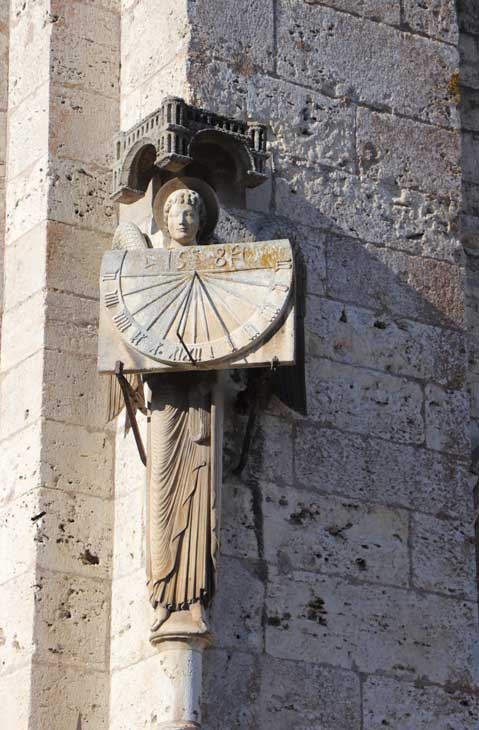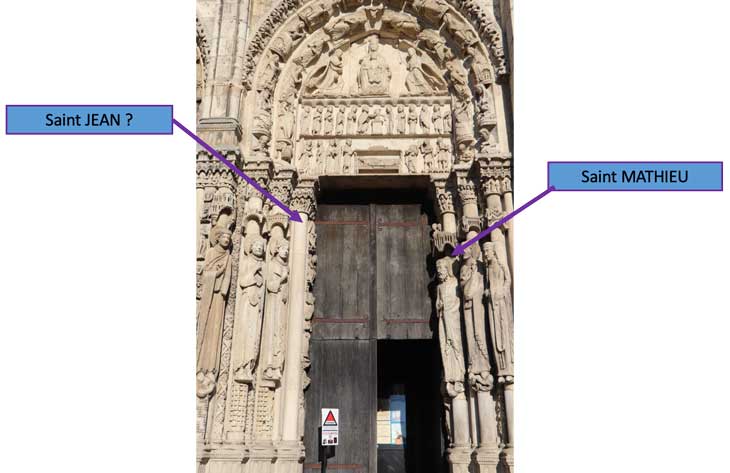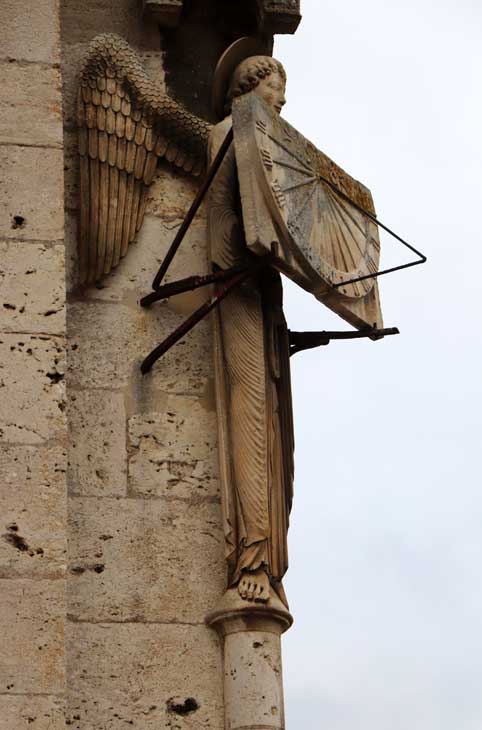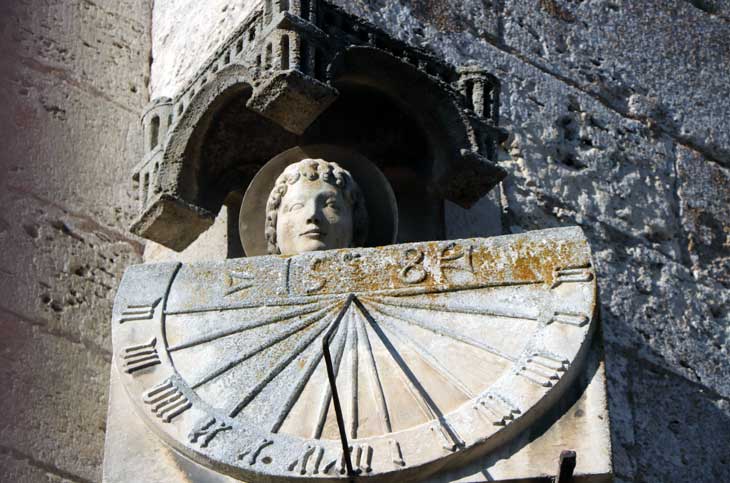Sundials, astrolab clocks, and much more, the whole of time is represented in Chartres Cathedral, from the north porch to the south porch, from the Creation of the World to the Last Judgment, from Alpha to Omega…
How is time measured in the cathedral, how is the day divided up…?
Extract from a lecture given by the Cathedral’s Visits & Welcome Service as part of its Spring 2023 Cycle.
The sundial in the shape of a sun
Unfortunately, we have very little information on this sundial, which we’ll call “Soleil” because of its shape.
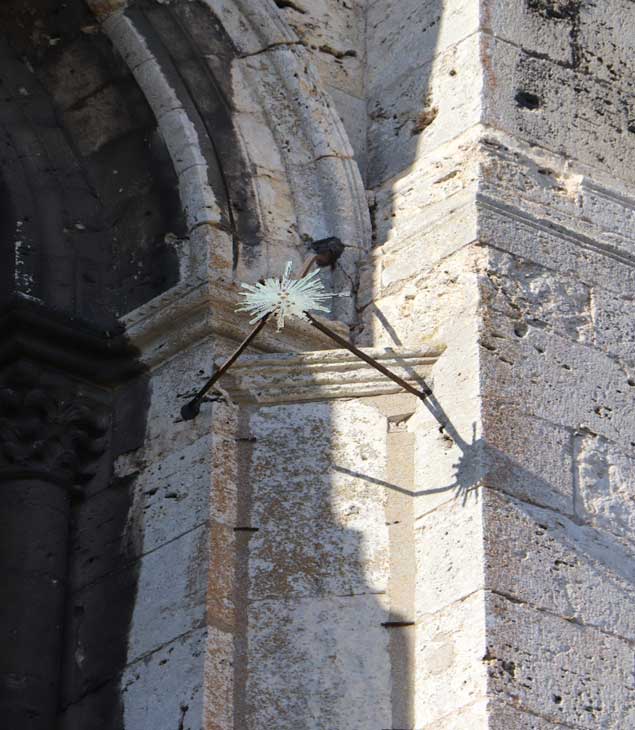
Historian Bulteau tells us that “in the corner of the arcade above the donkey that flies, there is a vertical meridian. It was placed there in 1763 by Canon De Bengy”.
A chapter deliberation tells us that the stone on which the sundial is drawn comes from the old rood screen.
In fact, the 13th-century stone rood screen was dismantled in 1763.
The angel on the sundia
This sundial is admired by all. But the man who speaks best of it is Auguste Rodin.
For him, an unconditional admirer of Chartres Cathedral (Les cathédrales de France), “It’s the angel of Chartres” “this pride! That nobility! From the height of his solitude, he gazes joyfully at the city in an attitude of annunciation…” “The hour is marked on him like a sentence on a book”.
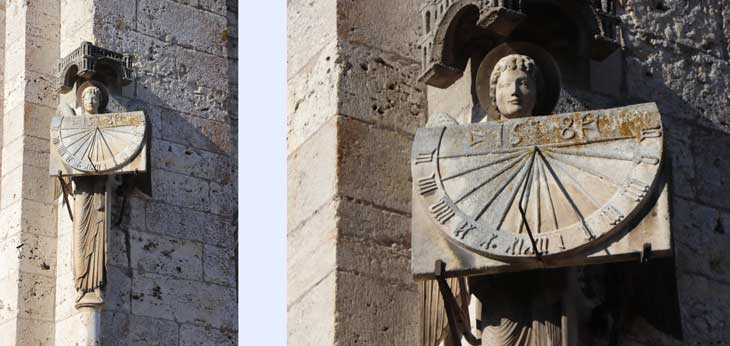
Stricken by pollution-related stone disease, it was removed on July 4, 1968 and placed in the crypt, along with six other columnar statues, in the 1970s.
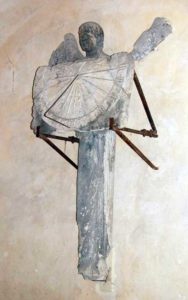
The angel with the original dial, in the crypt.
A copy made by Monsieur Barbier was put back on April 4, 1974.
The removal of this statue has provided some insight into its history. In the corner of the bell tower, an iron hinge was found, originally intended to support a statue with a small sundial, as in the city of Genoa (Italy).
The current statue is held by another device.
This sundial features several styles:
– the statue itself reveals the same style as the column statues in the central bay of the royal portal. It is barefoot, like the apostles. The only barefoot statue in the royal portal is holding a book, reminiscent of Saint Matthew.
– the statue of the angel on the dial is beardless. It could represent St. John, Jesus Christ’s favorite young apostle. This statue may have originally stood on the opposite side of the church to St. Matthew, as a statue is missing from this location. The right forearm, which may have been raised, and the left wrist have been savagely sawn off, confirming that it was not intended to be placed behind a sundial.
– The wings and sundial date from the 16th century.
The date on the sundial indicates 1528; it was between 1525 and 1528 that the astrolabic clock on the choir enclosure was installed. This sundial was probably used to set the clock.
Other sundials exist in numerous churches – in Strasbourg, Laon, Amiens…
Solar watches
The voussoir that directly encircles the tympanum of the central bay of the royal portal and surrounds Christ in majesty is populated by twelve angels. Seven of them carry on one of their hands, veiled by a cloak, a curious object that some believe to be an astrolabe. It’s a metal object with carefully sculpted details: this instrument is a sundial.
These solar watches feature an eyecup that is aimed at the sun. The light beam was projected onto a dial, enabling the solar time to be read.
Mr. Philippe Fretigne, a researcher and collector of old scientific instruments, recognized this object. This watch is perfectly at home here, as it evokes time, the solar system and space. It can also symbolize the absence of time, eternity. In the hands of the other angels: books, parchments – signs of knowledge.
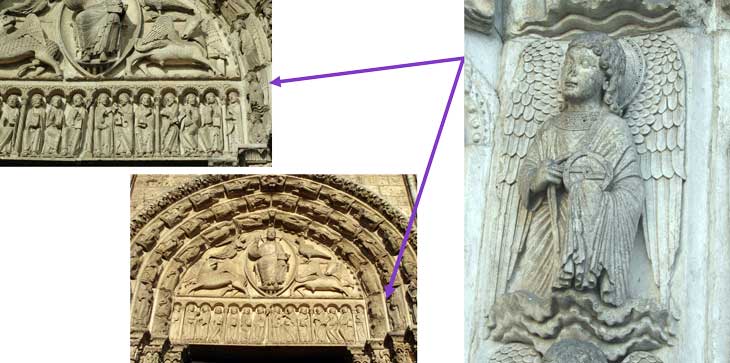
In other churches, Laon, Sens, Rouen… among the liberal arts, Astronomy holds a circular form crossed by a zigzag in a much less realistic and precise style. Perhaps it’s the same instrument?
To be continued…
Extract from a talk given by Christine Afota and Georges Athanassiadis, guides at the Cathedral’s Visitor Service, as part of the Cycles thématiques (Printemps 2023).
